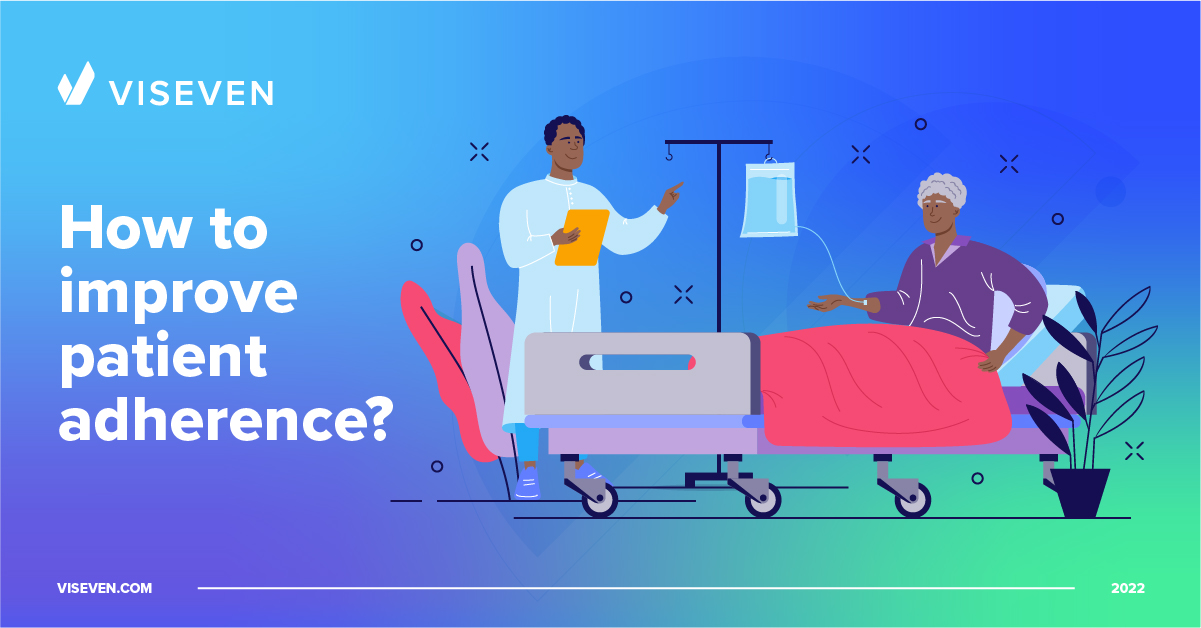
New technologies influence the majority sides of the healthcare industry, from how the treatment is provided to the time and place where patient’s interactions are carried out. Past are days of frequent clinical visits and phone-only support using legacy technologies.
On the contrary, customers anticipate HCP to implement digital patient adherence strategies to fit both expanding patient preferences and increasing trust in mobile platforms. HealthTech magazine research shows us the COVID-19 circumstances made patients use mob devices much more frequently to communicate with medical professionals. For instance,
Mckinsey report uncovered that 80% of Med Tech companies dislocated some of their marketing costs (in some occasions more than 20%) to digital channels. It’s no wonder ⅔ of Med Tech companies anticipate digital channels to answer with more than 20% of their profit by 2025.
By questioning themselves on how to improve adherence to medication, many HCPs modernized communications by using omnichannel technologies. It has become a primary case for healthcare leaders to comply with preferences of patients, engagement strategies, and perfect customer experience.
What is meant by improving patient adherence? We are going to reveal this further below.
What is Patient Adherence?
Patient adherence characterizes a grade to what patients properly stick to primary care advice. It is generally all about curing or drug compliance, but it might also relate to other contexts, such as medical device use, self-care, taking medications, or therapy proceedings. Both parties: the patients and HCP, stick to compliance. Meanwhile, a friendly physician-patient relationship is also critical in enhancing adherence. Access to treatment plays a central role in adherence, whereby longer wait time to access medication contributes to greater job no-shows. The cost of prescription care also plays an important role. Compliance can be mixed up with concordance when patients and physicians decide together about taking their medications and treatment plan.
Globally, non-compliance is a primary barrier to adequate health care.
In 2021 World Health Organization indicated that only 50% of patients with chronic illnesses residing in developed countries stick to care advice with notably low adherence to therapy proceedings for diabetes, hypertension, and asthma.
The main obstacles to compliance include the involvement of contemporary medication regimes, poor health literacy and not comprehending care advantages, the appearance of unpredicted “side effects”, low care satisfaction, the price of the drug, and insufficient connection between patients and physicians. Attention to perfect compliance has involved:
simplifying medication packaging;
sending effective care reminders;
improving patients literacy;
limiting medications prescribed synchronously.
Researches show a wide variety in terms of the characteristics and effects of interventions to improve medication adherence and help patients. However, It is still obscure how to sequentially improve medical adherence to cause clinically significant results.
Barriers to Medication Adherence
Unluckily, there are several barriers to reaching medication adherence which all cause alerting results and statistics spoken in the previous paragraph.
Here are 3 of the most extraordinary factors:
poor health literacy
The Center for Health Care Strategies unravels that about 36% of adults in the US have poor literacy, explained as the grade to which persons can acquire, process, and comprehend basic info and services required to decide on proper care.
Little health literacy causes medication non-adherence (in addition to some other wellness and financial factors). Patients cannot seize critical concepts: how to fulfill medication, when, and how much to take prescribed pharmacy. Attaining and sustaining adherence becomes too demanding, if not possible.
side effects
When patients experience adverse side effects from medications, they are more likely to stop taking the drugs or attempt to self-adjust their regimen to offset the effects. Many different side effects can contribute to non-adherence. A survey presented by Health Dialog found that weight gain, nausea/indigestion, dizziness/fatigue, and skin irritation were examples of such adverse side effects.
polypharmacy
Patients who take at least five drugs commonly referred to as polypharmacy, face many problems directly related to many prescriptions. These include a complicated dosing schedule, confusion in instructions, numerous side effects, and high costs.

The challenges and barriers to medication lead to a loss of brand loyalty among the patients who feel like the X brand has failed to meet their expectations. The reason behind poor medication adherence strategies starts with simple forgetfulness. However, in most cases, the gaps in day-to-day interaction between patients and pharma brands are to blame.
You can avoid all those barriers and leverage patient care to a new level of excellence if you implement a proper omnichannel marketing strategy for adherence. Let’s dive into the topic below.
Strategies to Improve Patients Adherence to Medication
The modern approach is not about medication sales. It revolves around the customization of disease management and helping patients. The statistic is relatively straightforward,
84% of all customers say it is essential for companies to treat them as a person, not a number, to win their business.
That’s why pharma brands are going after omnichannel experiences meant to express genuine concern for patients’ health and engage them in the healthcare journey across multiple channels. Omnichannel empowers patient-centricity driven by productive engagement tools and opens new ways to improve medication adherence.
The omnichannel journey starts with identifying pain points to map the patient journey and define the engagement strategy that says, “we root for your success”. It is crucial because
61% percent of customers say a commitment to their success or satisfaction strengthens their loyalty.
The optimal channel mix supports your message and provides value measured by good treatment outcomes based on overall satisfaction of patients.
In summary, omnichannel stimulates interaction where one channel complements the other, thereby improving patient outcomes and provider performance.
How Omnichannel Enhances Patients Adherence?
Our team of experts has been engaged in developing a full-fledged customer journey for patients suffering from chronic diseases. The process consisted of several necessary steps. Regarding an adherence program, it is worth considering all possible scenarios of patients’ behavior. As far as early identification of patient needs leads to a more customized patient experience, segmentation was among the first steps to take. It gave us a profound understanding of patients’ needs, medication regimens, data about their behavioral trends, and barriers preventing them from timely medication.
The team has chosen an optimal mix of significant and additional communication channels for always-relevant engagement. Integration of those channels has paved the way for personalized interaction providing interconnection with the content transmitted between them. As a result, patients enjoyed timely and targeted delivery of individualized content regarding prescribed medicine through preferred channels.
Based on all the steps, we developed a deliberate architecture integrating all channels into an omnichannel approach and activating the customer journey chain built on various scenarios of patient behavior.
Factors such as level of commitment and motivational triggers were taken into account to dose patient support wisely.
As a result,
the communication program increased the adherence of patients with heart disease by 2.8 months. The adherence of patients with diabetes increased by 4.1 months.
Medication Adherence Solutions
Patient-centricity provides a degree of empathy and management to close gaps in day-to-day communication between patients and HCPs. It helps to achieve the best possible results and lower healthcare costs for both parties. The introduction of an omnichannel approach toward modern medical management is vital, and its role in daily patient care and regimens cannot wait.
To learn more about the true nature of the omnichannel approach to designing holistic communication with the patient, download a free copy of our medication adherence patient case study.



